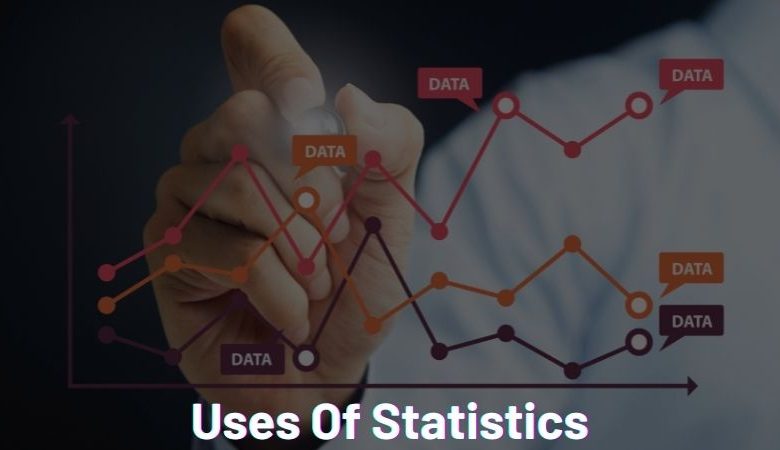Top 7 Uses Of Statistics In Our Real Life

Many of us think, why we are studying statistics and our uses of statistics in real life. They also want to understand the importance of the use of statistics. In this text, I will show you the uses of statistics in real life. They also pay attention to the jobs provided in statistics. To know jobs’ scope in statistics, we first need to know about the term statistics.
What Is Statistics?
Statistics are not just facts and figures; they are something more than that. In the broadest sense, “statistics” relates to various methods and procedures for examining, interpreting, publicizing, and making choices based on data.
Importance of Statistics
A statistician analyzes data. A thorough understanding of statistical analysis enables you to gather the right data, conduct the right analyses, and present the results correctly. Making discoveries in science is based on statistics, as are predicting the future and making decisions based on data. Understanding a subject more thoroughly can benefit from statistics.
Top 7 Uses Of Statistics In Our Real Life
Weather Forecast
What do you think of weather forecasting? Have you done any research on government weather forecasting? A lot of the forecasting process relies on statistics. Statistical functions are used to forecast the weather through computers. By using these statistics, you can compare the current weather with the previously recorded seasons and conditions. These statistics are helpful to the government.
Political Campaigns
A campaign’s success depends on stats. There is no such thing as a perfect election campaign without statistics. This gives them an indication of their chances of winning an election in a particular area. It also helps them to predict the winner. A particular voting zone provides information about how many candidates are in the parties’ support. On the other hand, it helps predict the future government.
Research
Statisticians are crucial to the work of researchers. The statistical method can be applied to the acquisition, analysis, interpretation, and presentation of data. Using statistics in research can be used to summarize, characterize, describe, and perform research effectively.
In addition, there would be a decrease in the effectiveness of medical treatment without research to find out which drugs or interventions work the best. Researchers also conduct studies on the health consequences of age, race, or country in order to identify the effects of these factors.
Use of statistics in education
It is advantageous to educators to use statistics in their classrooms to observe which educational techniques work on which students and to understand why. It is also necessary to determine test details so that they can determine whether students are performing as expected, statistically speaking. Studying student achievement at all levels of testing and education, from kindergarten to undergraduate and graduate study, is an analytical process.
Prediction
It helps us predict what the future will bring when we factor in the figures. Our daily lives are what let us make predictions. Whether it is accurate will depend on many factors. In order to make a prediction, we must consider the external as well as internal factors that could affect our future.
The same statisticians apply statistical techniques in estimating an event. Statistics are used by doctors, engineers, artists, as well as practitioners to forecast the future.
Quality Testing
Statistics use in every aspect of life for quality testing. Day-to-day, we conduct quality tests to ensure that our purchase is correct and that our investment will yield the best results. For the best results, we test a sample of what we intend to purchase. We intend to buy the sample if the quality test passes.
Government
Making decisions about the health of the population, educational status, and much more can influence by statistics that use in government. A vaccine that can assertively protect citizens against Coronavirus may use by the government.
After vaccination, what are the outcome reports? Do vaccines prove useful or not? In this way, by using polls, the government can find out where vaccinations are practiced and where they should focus their efforts, or where cases are increasing each day. In order to vaccinate their citizens, the governments of different nations use statistical data. With the data, the availability of vaccines can also be monitored.
Conclusion
The purpose of this blog has been to present information on the uses of statistics in everyday life, as well as statistical problems. Now you know what statistics use for, and you know how they provide our daily lives and help us make informed decisions. A sound understanding of statistics will help you collect the right data, apply the right analyses, and present your findings effectively. Using statistics is an important process behind making discoveries in science, analyzing data, and making predictions.





